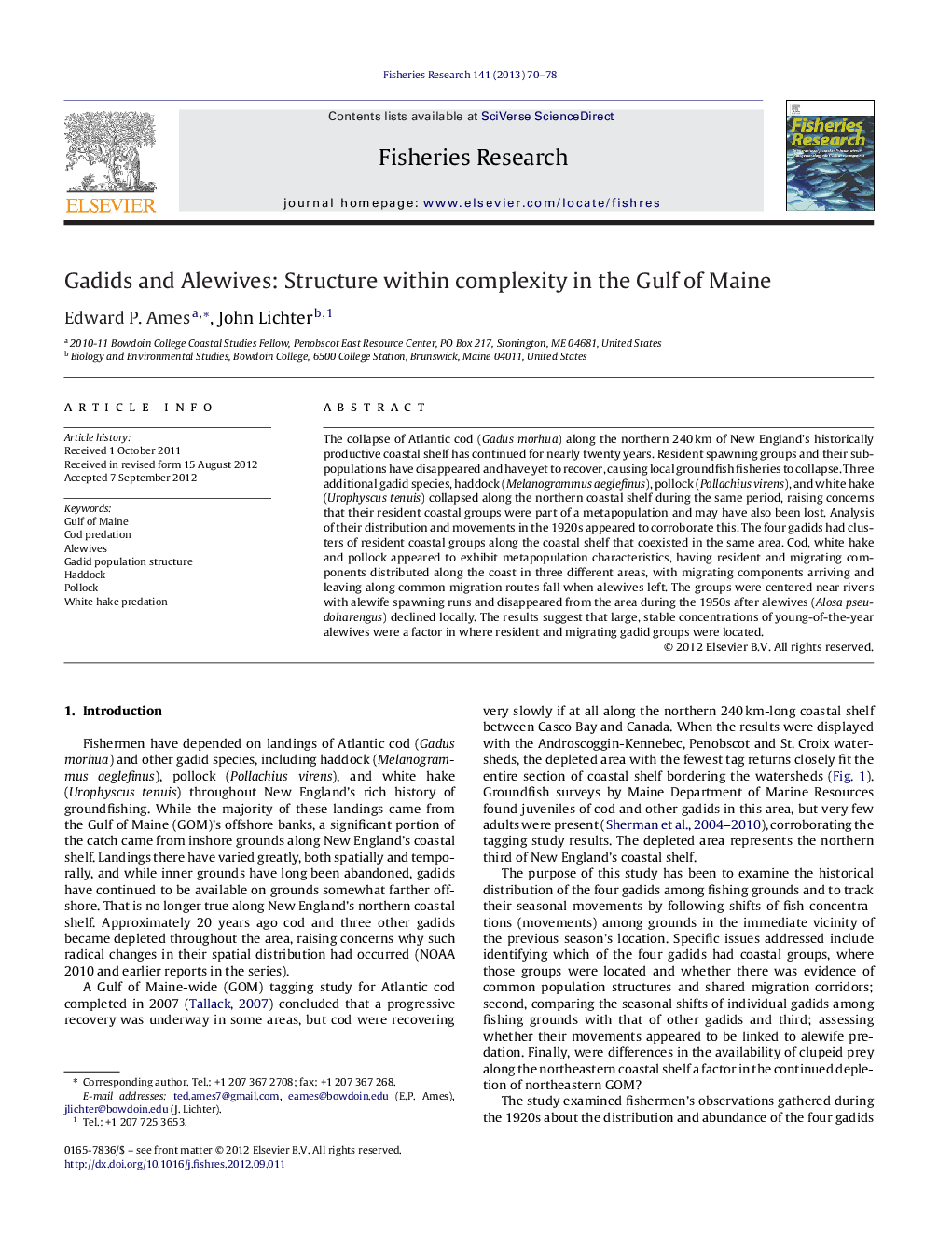| Article ID | Journal | Published Year | Pages | File Type |
|---|---|---|---|---|
| 4543183 | Fisheries Research | 2013 | 9 Pages |
The collapse of Atlantic cod (Gadus morhua) along the northern 240 km of New England's historically productive coastal shelf has continued for nearly twenty years. Resident spawning groups and their subpopulations have disappeared and have yet to recover, causing local groundfish fisheries to collapse. Three additional gadid species, haddock (Melanogrammus aeglefinus), pollock (Pollachius virens), and white hake (Urophyscus tenuis) collapsed along the northern coastal shelf during the same period, raising concerns that their resident coastal groups were part of a metapopulation and may have also been lost. Analysis of their distribution and movements in the 1920s appeared to corroborate this. The four gadids had clusters of resident coastal groups along the coastal shelf that coexisted in the same area. Cod, white hake and pollock appeared to exhibit metapopulation characteristics, having resident and migrating components distributed along the coast in three different areas, with migrating components arriving and leaving along common migration routes fall when alewives left. The groups were centered near rivers with alewife spawning runs and disappeared from the area during the 1950s after alewives (Alosa pseudoharengus) declined locally. The results suggest that large, stable concentrations of young-of-the-year alewives were a factor in where resident and migrating gadid groups were located.
► Gadids and Alewives: structure within complexity in the Gulf of Maine. ► Gulf of Maine population structures were plotted for four costal gadids. ► Cod, haddock, pollock and white hake were linked to alewife predation. ► The gadids disappeared after alewives collapsed. ► The study suggests alewife recovery may restore coastal gadids.
